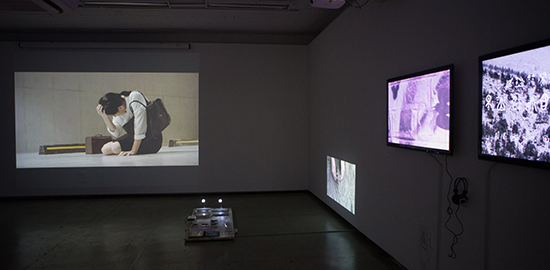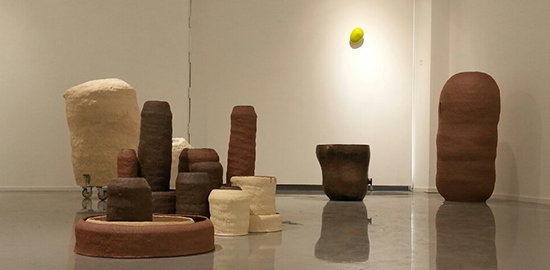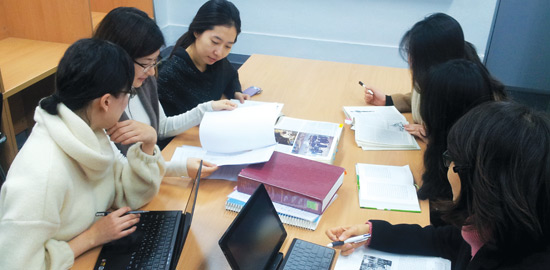-

Korean Painting
The Oriental Painting program, which includes both masters and doctoral programs, aims to implant the intellect and values of oriental painting in the students and to cultivate artists with both the theoretical foundations and the creative wherewithal who can pave the way for the future. The curriculum is composed of: theoretical courses to help students understand the trend of Korean and Oriental Art so that they can develop a more balanced artistic perspective, and practical courses in which they can absorb and build on the principles, traits, and techniques of oriental painting in order to create new painting techniques. Graduates of this program go into a diverse range of fields as artists, curators, directors, art education program managers, educators, art administrators, art magazine editors, or reporters.
-

Painting
The Western Painting program, which includes both masters and doctoral programs, strives to develop artistic capacities in students through all-round art education in order to nurture female professionals in the field of art. It offers intensive seminars and practical courses in which students are able to study the wide array of perspectives on contemporary art and various critiques of academic discourse so that they can build and express their own artistic perspectives. Through these creative practical studies, students are able to cultivate the critical mind and go beyond their status as an individual artist to play a leading role in today’s art education field.
-

Sculpture
The Sculpture program seeks to nurture professionals in sculpture and its related fields whose intellectual curiosity and creative imagination meet the demands of today’s cultural and artistic world. Students are encouraged to develop their own profound artistic perspective and creative vision through a wide range of experiments on, among other things, material, technique, form, content, and concept, as well as the skills to appreciate and critique a piece of work.
The curriculum is focused on helping students establish their own unique artistic perspective by teaching fundamental concepts of sculpture and, as an extension, the experiments of various media and techniques along with contemporary art discourse. In addition to intensive courses on art theory, the program offers various courses to help students grow into skilled artists with a contemporary touch.
Graduates of this program find careers as not only sculptors capable of leading the domestic and international sculpture scene, but also as stage artists, displayers, special effects makeup artists, art decoration sculptors, art museum and gallery curators, art theorists and art educators. They can also work in the design field requiring heightened 3-dimensional sensitivity and in other related fields. -

Ceramics
The Ceramics program, which includes both masters and doctoral programs, seeks to nurture artists experienced in both theory and practice by teaching theoretical studies on ceramics as a multifaceted medium and by developing creative art capacities.
The curriculum straddles the borders of art, design, and craft and strives to carry out interdisciplinary research in which ceramics as both a medium and a concept serves as the ground for research. In the first and second semesters, students study about various texts and contemporary academic discourse on ceramics which will help them gain a firmer grasp of their work. From the third semester, they start focusing on art production. Special lectures and open critiques are held each semester so that students can explore their widened perspective of ceramics and its infinite possibilities.
Graduates of this program can start their individual creative work as a professional artist or find careers in ceramic studios, ceramic industrial or ceramic material companies, or industrial ceramics. They can also work in various related fields such as ceramic foundations, art museums, and galleries. -

Studies in Visual Art
The Studies in Visual Arts program consists of a systematic set of courses encompassing the entire field of visual arts, including contemporary art and its theory, artworks and criticism, pop culture and art, art and human psychology, art and society, theory and practice of art administration, public art and environment, structure and functions of art museums, practice of exhibition design, and international exhibitions and art market.
* homepage : http://my.ewha.ac.kr/ewhavag/ -

Integrated Art Therapy
The Integrated Art Therapy program offers a multidisciplinary education based on artistic, clinical, and academic approaches to develop professionally integrated art therapists. This exceptional training equips students with effective research and clinical skill sets as professionals and pioneers in the field, while strengthening the students’ artistic identity. The graduates go on to have careers in teaching and/or supervisory positions at universities, hospitals, and government related fields.
Graduate School
/WEB-INF/jsp/k2web/com/cop/site/layout.jsp
artewhaeng_JW_MS_K2WT003_S
artewhaeng_JW_MS_K2WT003_S
